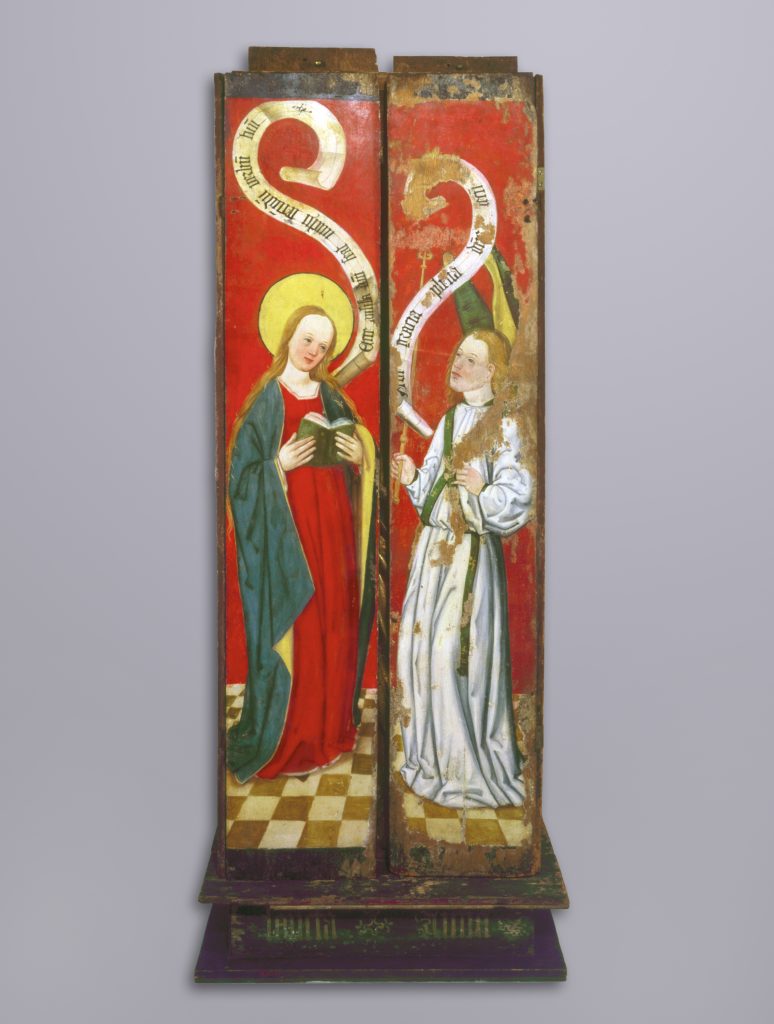This late Gothic tabernacle shrine from Brekke on the Sognefjord represents a type that was widespread in central and northern Europe during the late Middle Ages. The shrine was probably produced in northern Germany, possibly Lübeck. The figure of the standing Virgin and Child has almost completely preserved its original polychromy. The Virgin has long, curly hair that falls down from under her crown over the shoulders and back, and she wears a golden mantle and robe.

In her right hand she holds a pear-shaped fruit while she carries the naked Christ child on her left arm. The dossal is decorated with imitation gold brocade, and the shrine is crowned with a flat-topped baldachin with an ogee arch and tracery. For reasons unknown, the front of the pedestal carries the inscription sancta anna. However, the iconography makes clear that it was originally a Marian shrine.

The insides of the four wings show, framed by red bands along the edges, four Marian scenes that each span the width of both panels: the Visitation of Mary and Elizabeth in the company of an unknown third woman (top left), followed by the Birth of Christ (top right), the Adoration of the Magi (bottom left) and the Presentation in the Temple (bottom right). When closed, the shrine’s front shows the Annunciation, as was usual in the fifteenth century. Mary and the angel, both with text banderoles, are standing on a tile floor rendered in perspective before a red background. The same scene, depicted in an almost identical manner, is found on the Marian shrine, probably of Lübeck origins, in Risinge (Östergötland, Sweden).
Northern Germany (Lübeck?), c. 1480
From Brekke (Sogn), in the museum before 1868
Oak, painted
H 144 x W 157 x D 38 cm (opened)
H 144 x W 56 x D 38 cm (closed)
Inv. no. MA 29
